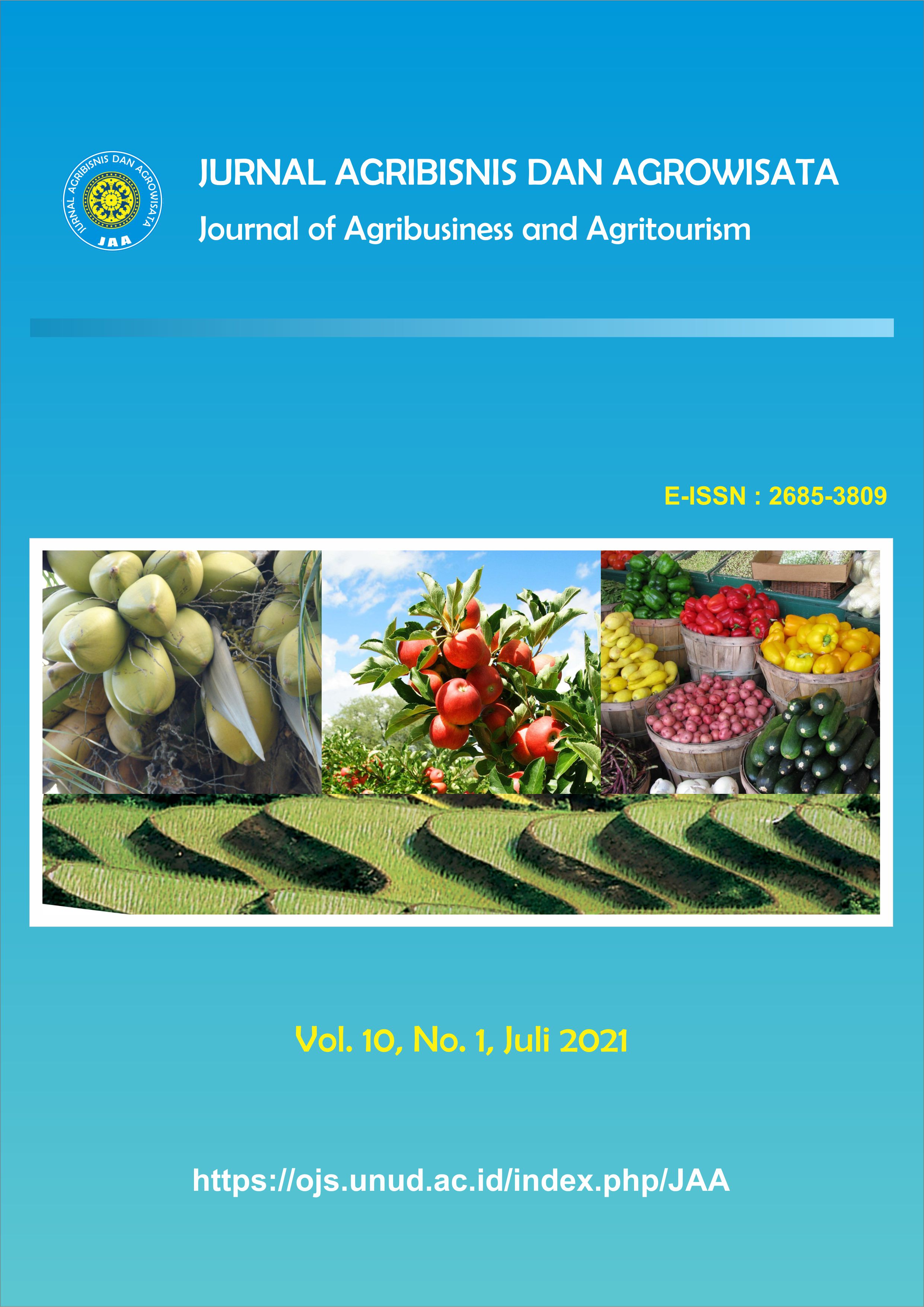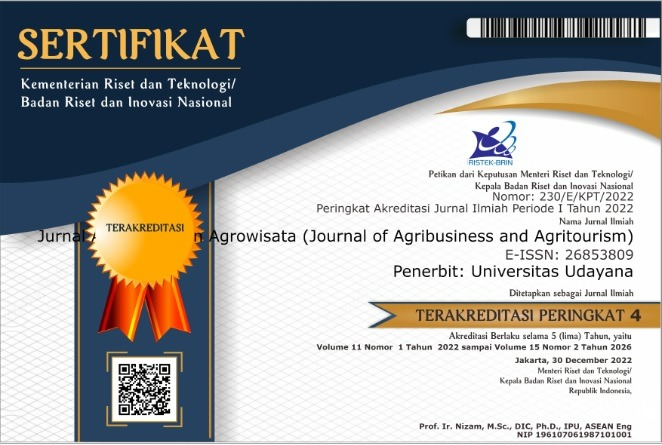Pendapatan Usahatani Pakcoy (Brassica rapa L) di Desa Baturiti, Kecamatan Baturiti, Kabupaten Tabanan
Abstract
Pakcoy Farming Income (Brassica rapa L) in Baturiti Village, Baturiti Sub-District, Tabanan Regency
Mustard spoon or often known as pakcoy is a type of vegetable that is widely cultivated today. The stems and leaves are wider than ordinary green mustard, making pakcoy mustard types more often used by the people in various dishes. This certainly provides a bright business prospect for Pakcoy farmers, because the market demand is quite a lot. The purpose of this study is to determine the income and break-even point of Pakcoy farming in Baturiti Village, Baturiti Sub-District, Tabanan Regency.The population of this research is Pakcoy farmers in Baturiti Village, and using purposive sampling with a total sample of 42 farmers who work on Pakcoy and broccoli. Data analysis techniques are income analysis and break even point analysis. The cost calculation used is an approach from the production aspect and the result of the percentage of Pakcoy commodity is 38.02%. The results show that the income received by Pakcoy farmers is greater than the costs incurred, while the income of farmers who do Pakcoy farming for one growing season is Rp 1,751,056.00 for an average land area of 0.10 ha. Break-even point production from Pakcoy farming reached 51.93 kg and break-even point obtained price of Rp 2,335.67/ kg. Break even point of products and prices from Pakcoy farming in Baturiti Village shows a smaller value than the number of products produced by farmers, which is 227.38 kg and the price that farmers have sold is Rp 10,226.19. Pakcoy farming can be categorized as profitable because farmers have managed to get revenue above the breakeven capital.
Downloads
References
Badan Pusat Statistik. 2016. Penduduk 15 Tahun Ke atas yg Bekerja Menurut Lapangan Pekerjaan Utama 1986-2017: Badan Pusat Statistik Provinsi Bali.
Dinas Pertanian Kabupaten Tabanan. 2018. Data Luas Lahan dan Produksi Tanaman Sawi di Kabupaten Tabanan.
Haryanto, E. 2007. Sawi & Selada. Revisi ed. Seri Agribisnis. Jakarta: Penebar Swadaya
Rangkuti, F. 2000. Business Plan: teknik membuat perencanaan bisnis dan analisis kasus. Jakarta: Gramedia Pustaka Utama.
Sapto, W dan Arum, A S. 2013. Aplikasi Hidroponik NFT pada Budidaya Pakcoy (Brassica rapa chinensis). Jurnal Penelitian Pertanian Terapan. 13(3), 159-167
Saragih, I. 2007. Analisis Pendapatan Usahatani dan Pemasaran Kopi Arabika dan Kopi Robusta (Studi Kasus di Desa Tambun Raya Kabupaten Simalungun Provinsi Sumatera Utara) [Skripsi]. Fakultas Pertanian. Institut Pertanian Bogor
Soekartawi. 1995. Analisis Usahatani. Jakarta: UI Press.
Sugiyono. 2013. Metodelogi Penelitian Kuantitatif, Kualitatif Dan R&D. Bandung: ALFABETA.
Widyantara, W. 2016. Bahan Ajar Mata Kuliah Manajemen Usahatani. Denpasar: Universitas Udayana







